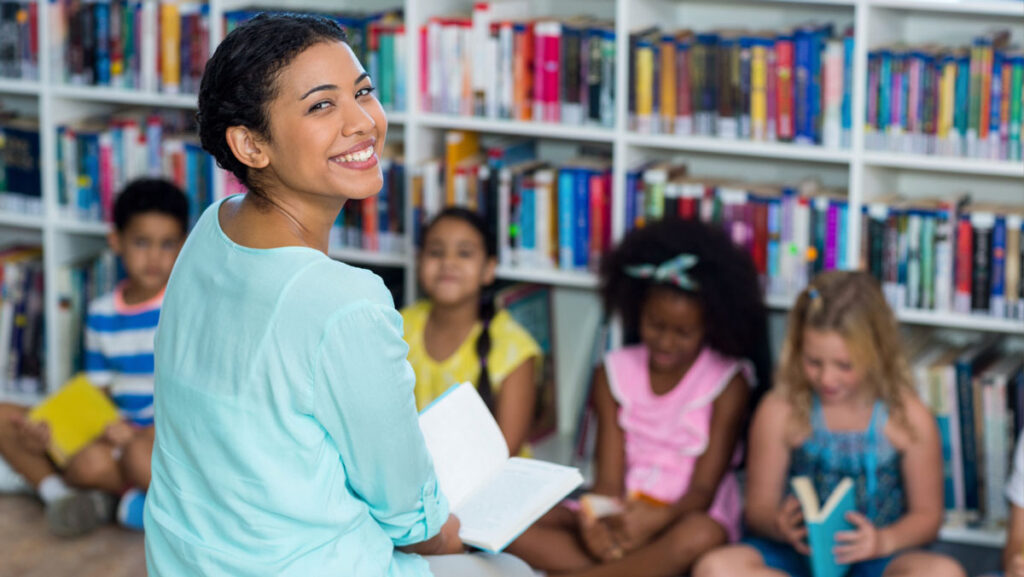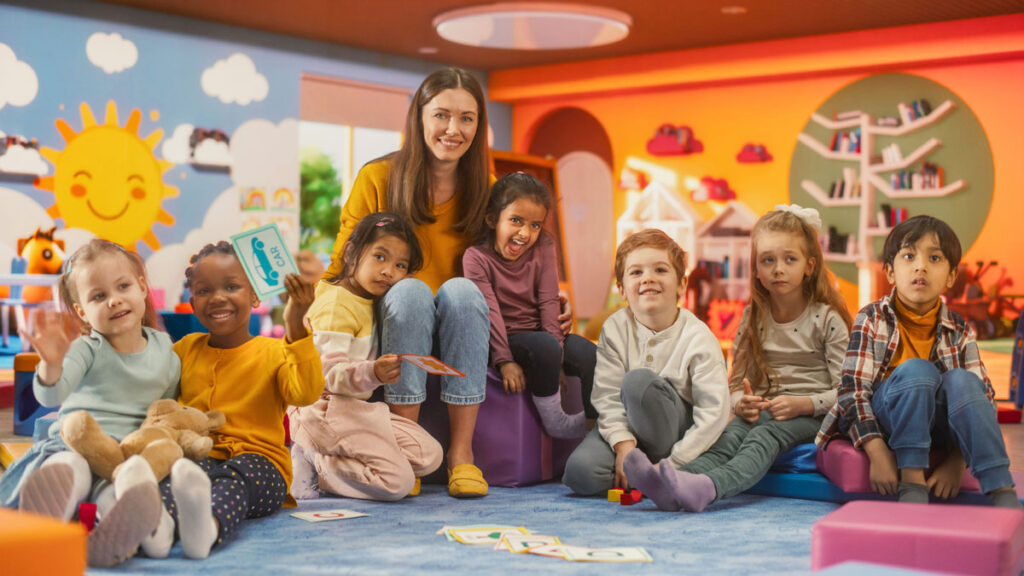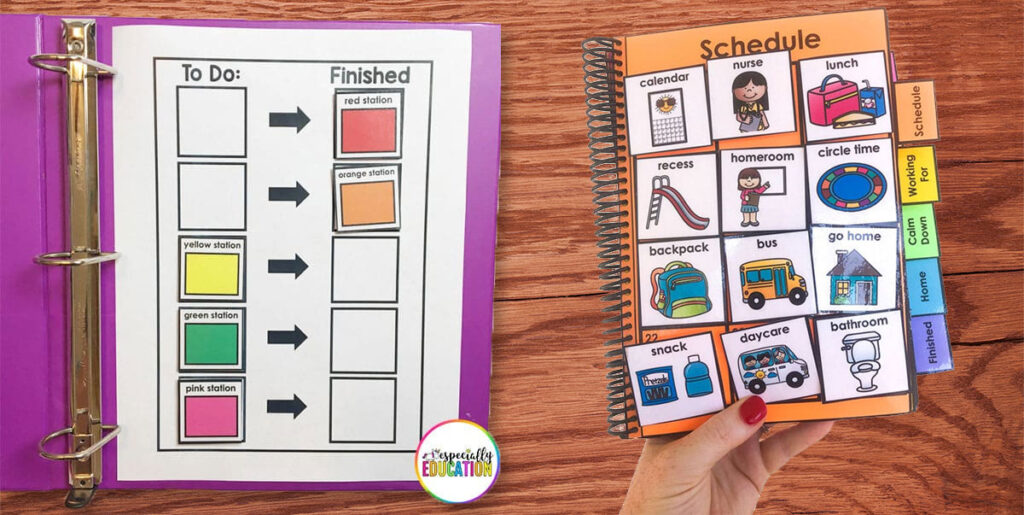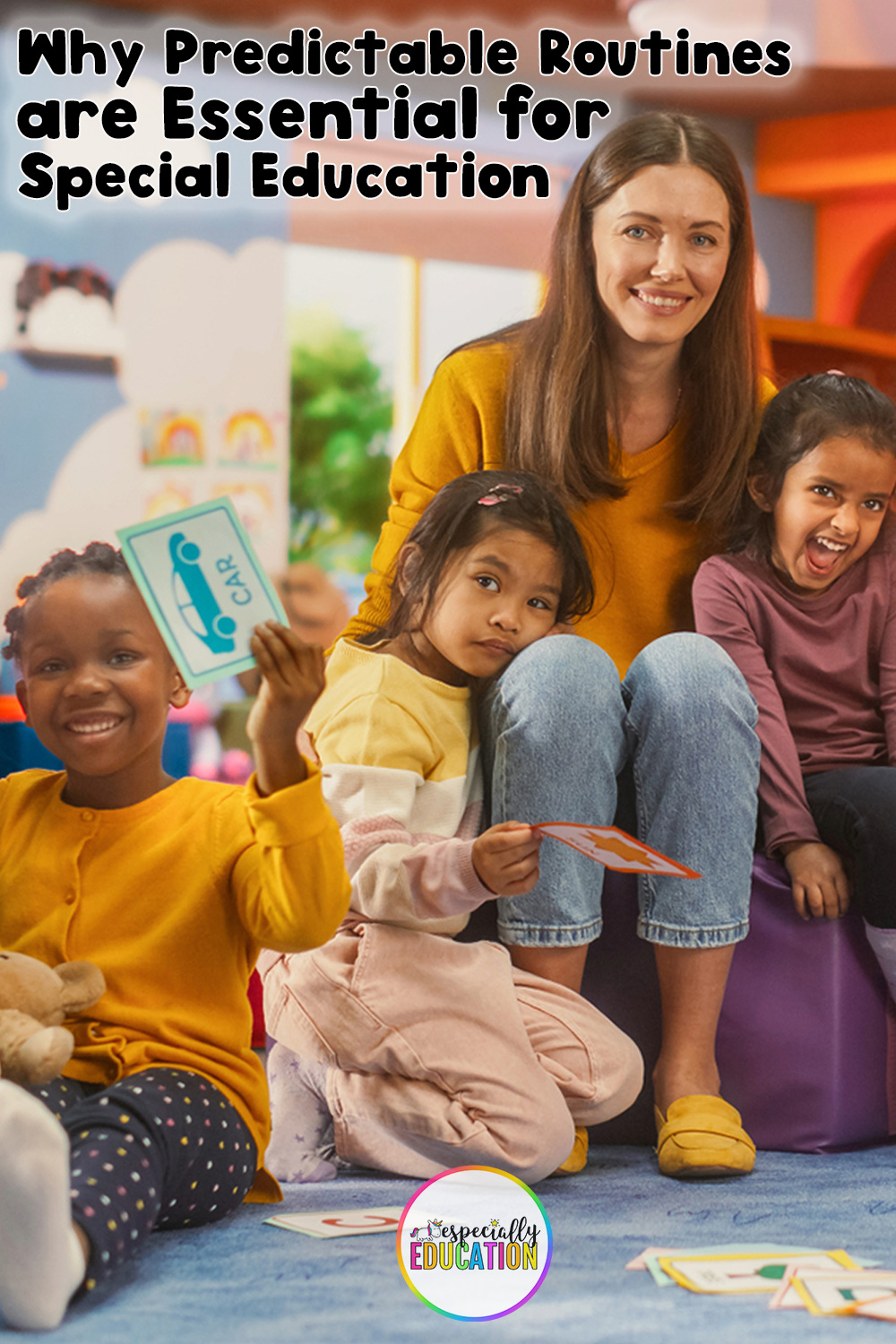
A Calm Start Creates a Successful Day
In a special education classroom, structure isn’t just helpful—it’s transformative. Predictable routines help early learners feel safe, understood, and confident in what’s coming next.
When routines are consistent, students don’t have to guess what’s expected of them. That kind of clarity can be life-changing for a child who has difficulty with transitions or communication.
For special education teachers, routines are one of the most powerful tools in the classroom. They create smoother days, provide clear and concise behavior expectations, and allow more time for learning.
Why Routines Matter in Special Education
Young children thrive on predictability. For students with autism, ADHD, or other developmental delays, a routine isn’t just a helpful tool—it’s essential. Predictable routines help regulate emotions, reduce anxiety, and build trust between student and teacher.
From a brain science perspective, routines support cognitive development activities by reducing the cognitive load of decision-making. Students can focus on learning new skills because they’re not wasting mental energy figuring out what’s next.
Building Trust with Predictable Structure
Structure builds security. When a student knows that every day starts with a visual schedule and ends with a goodbye song, their world feels manageable.
In your special education classroom setup, small, repeatable routines matter:
- Greeting students with a visual cue and their name
- Starting each day with a calm morning meeting
- Using the same steps to transition from centers to clean-up
These daily rituals create a framework students can rely on, helping them become more comfortable and confident in their space.
Visuals: The Language of Routine
Routines aren’t just taught—they’re shown. For many early learners, using visuals to support communication is the bridge to understanding. Visual schedules, step-by-step charts, and picture cards help students grasp what’s expected, even when words are difficult.
Consider using these for better communication:
- A large daily classroom schedule with removable pieces
- Individual first/then boards
- Laminated cue cards for transitions and daily jobs
- When routines are visual, they become accessible—and more likely to stick.
When routines are visual, they become accessible—and more likely to stick.

Independence Grows from Repetition
The ultimate goal of any special education classroom is to help students grow more independent. Predictable routines are a key to that growth.
Every time a student follows a familiar routine—washing hands before snack, putting away a finished activity, or transitioning after a timer—they’re practicing life skills. And they’re doing it with confidence.
With task organization in the classroom, students can:
- Follow visual schedules independently
- Complete structured work systems
- Transition without prompting and reduce behavior incidents
Predictability gives students the opportunity to do things on their own, and that’s where the magic happens.
Teaching Routines Step-by-Step
Building a routine doesn’t happen overnight—but it’s worth the time. Start small and be consistent. Model each step clearly. Use consistent language. Praise effort and celebrate progress.
- First/then boards
- Visual timers
- Positive reinforcement charts
Incorporate these strategies into your differentiated instruction lesson plans to support all learners, especially those who benefit from repeated modeling.

Classroom Tools That Reinforce Routine
At Especially Education, we believe in routines that work—and we’ve built them into many of our resources. Whether you need visual schedules, anchor charts, or visual recipes for special needs students, you’ll find tools that support smooth, structured days.
Our printable curriculum units include visuals, predictable lesson flows, and step-by-step instructions. These supports make it easy to implement effective routines across reading, sensory play, and independent learning time.
Here are a few favorites that reinforce predictable routines:
- Made For Me Literacy: Level A Bundle – Built-in visuals, lesson flow, and structured center activities. Our thematic units follow consistent structure across all of our units!
- Visual Schedule Bundle – Visuals to support transitions and build independence
- Visual Recipe Pack – Step-by-step visuals that support routine, sequencing, and life skills
- First-Then Board Visual Schedule Flip-Books – Reinforces daily routines and transitions through simple, visual guidance.
What Routines Look Like in the Real World
Here’s what predictable routines can look like in action:
- A student arrives, checks their visual schedule, and moves their picture to “morning work” without prompting
- Another student completes a visual recipe during cooking time, using the same set of steps every week
- During centers, children rotate from station to station using timers and picture cues—and they know exactly what’s expected
These routines don’t just manage behavior—they create confident learners.

Routines That Empower and Elevate
Predictable routines are more than just helpful—they’re essential. They help students feel safe, support their communication, and foster independence in meaningful ways. In a world that can feel overwhelming, routines provide calm, clarity, and confidence.
Start with one small routine. Add a visual. Celebrate progress. And when you’re ready, check out our library of resources designed with predictability and support in mind.
Want to see more tools that support your classroom routines? Head over to Especially Education on TpT and find the perfect visual schedules for your classroom.

Leave a Reply